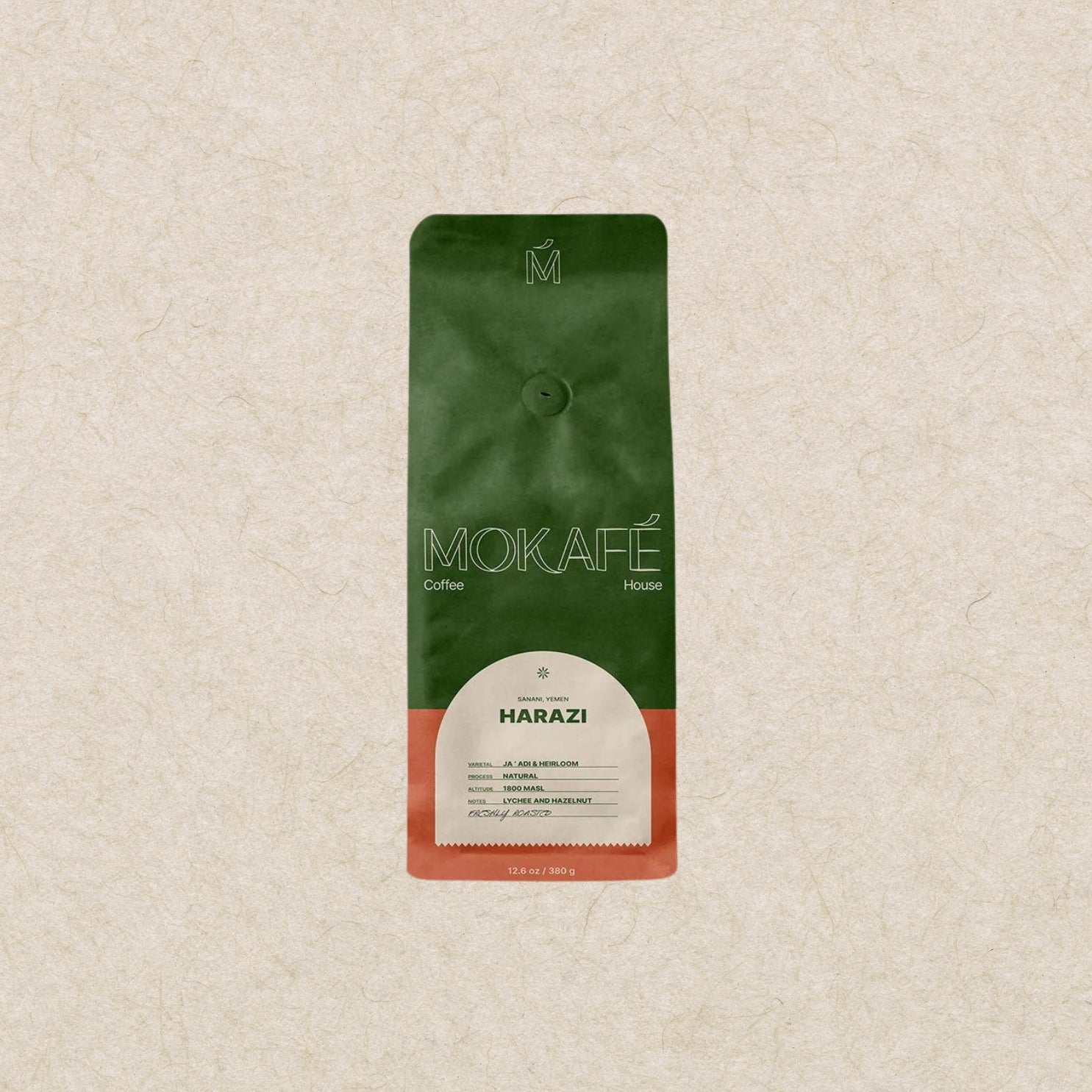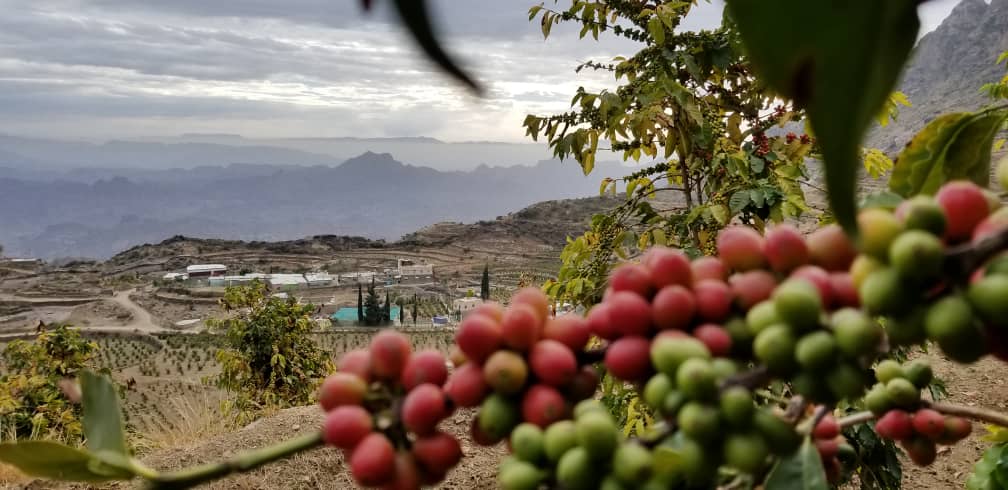In the world of coffee aficionados, certain countries reign supreme when it comes to the art of coffee production. Brazil's vast plantations and Colombia's high-quality beans are frequently celebrated, and Ethiopia is hailed as the birthplace of coffee itself. However, nestled amidst the giants of the coffee industry, there's a country that doesn't make the usual "top producers" list but boasts a coffee culture and history so rich it should be on every coffee lover's radar.
In this blog, we're about to embark on a journey to the Arabian Peninsula to discover what makes
Yemeni coffee
so exceptional. Yemen may not have the vast production volumes of its coffee superpower peers, but it certainly has something far more precious – a centuries-old legacy of coffee that has helped shape the very essence of this beloved beverage.
Origins of Yemeni Coffee: A Journey Back in Time
Yemen, alongside Ethiopia, is often regarded as the birthplace of coffee. While the origins of the coffee plant can be traced back to Ethiopia, it was in Yemen that the cultivation and consumption of coffee as a beverage truly took root. The 15th century witnessed Sufi monks using coffee to stay awake during night long meditations, a practice that marked the dawn of coffee culture.
Yemen's historical significance in coffee
is further cemented by its trade in the beloved bean. By the 18th century, coffee had become Yemen's most lucrative export, with the port town of Al-Makha at the heart of this thriving trade.
Mocha and the Coffee Monopoly
Yemen's coffee
product became renowned as "Mocha," drawing its name from the town that facilitated Yemen's coffee trade. Yemen zealously guarded its prized export, refusing to sell coffee seeds or plants. However, this did not deter other nations, including the Dutch, British, and French, from smuggling coffee seeds to kickstart their own coffee production in distant colonies. Dutch traders established coffee production in Java, an enterprise that later gave birth to the renowned Mocha Java blend. The competition posed a challenge to Yemen's coffee monopoly, and by the turn of the 19th century, Yemen's share of the world's coffee supply had diminished significantly.
The Resilience of Yemeni Coffee Culture
Today,
Yemen's coffee production
accounts for only a fraction of the global market, just 0.1% according to some estimates. However, what sets Yemeni coffee apart is the continuation of its rich coffee culture. Traditional family-owned farms, often perched on terraced slopes at higher altitudes, continue to cultivate coffee trees with methods that haven't changed in centuries. Organic farming practices are the norm, and no artificial chemicals are employed in the cultivation process.
The Distinctive Flavor Profile
Yemeni coffee boasts a flavor profile that is unlike any other. The arid climate of Yemen has led to the development of a unique dry-processing method, resulting in coffee beans that are irregularly shaped and sun-dried. These beans, often ground using camels or compact gasoline engines in high-altitude regions, offer a sensory experience that is rich, complex, and steeped in history. The flavor profile is characterized by highly spiced, wine-like notes, subtle hints of chocolate, and the sweetness of dates. The National Coffee Association aptly describes the taste of Yemeni coffee as "deep, rich, and like no other." Yemeni coffee is a testament to resilience, tradition, and the enduring bond between humanity and the land it cultivates.
Process of Making Yemeni Coffee
Making Yemeni coffee
is a time-honored process that involves a series of traditional steps, each contributing to the unique flavor and cultural significance of this beverage. Yemeni coffee is celebrated for its rich and complex taste, and the methods used in its preparation are deeply rooted in tradition. Here's a step-by-step guide to making Yemeni coffee:
1. Selecting the Beans:
Yemeni coffee begins with the selection of high-quality coffee beans. Yemeni farmers often cultivate traditional coffee varieties, which have evolved over centuries and contribute to the unique flavor of Yemeni coffee.
2. Harvesting and Sorting:
Coffee cherries are harvested by hand when they reach their peak ripeness. The cherries are then sorted to ensure that only the best quality beans are used in the coffee-making process.
3. Washing and Drying:
The harvested coffee cherries are washed to remove any impurities and dried under the sun. Yemen's arid climate plays a significant role in the drying process, as it contributes to the distinctive dry-processing method that Yemeni coffee is known for.
4. Roasting:
The dried coffee beans are roasted, typically in a simple, traditional manner. Yemeni coffee is often roasted using wood-fired clay ovens, which impart a unique smokiness to the beans. The roasting process is carefully monitored to achieve the desired flavor and aroma.
5. Grinding:
Once the beans have been roasted to perfection, they are ground into a coarse powder. Yemeni coffee is known for its irregularly shaped and coarsely ground beans, which contribute to its distinctive character.
6. Preparing the Coffee Pot:
Yemeni coffee is traditionally prepared using a small, long-necked coffee pot known as a "dallah" or "jabana." The pot is typically made of copper or brass and is a symbol of Yemeni coffee culture.
7. Spicing and Boiling:
In the coffee pot, water is added along with a variety of aromatic spices. Common spices used include cardamom, cloves, and ginger, but the choice of spices can vary by region and personal preference. The spiced water is brought to a boil, infusing the flavors into the liquid.
8. Adding the Coffee:
Once the spiced water is boiling, the coarse Yemeni coffee grounds are added to the pot. The mixture is allowed to simmer over low heat, infusing the coffee with the spices. This slow infusion is integral to Yemeni coffee's unique flavor.
9. Serving and Enjoying:
Yemeni coffee is traditionally served in small cups without handles, often accompanied by dates or other sweets. The coffee is poured in a continuous flow from the pot into the cups, and it's customary for guests to enjoy several rounds of this aromatic brew.
10. Sustainable Resourcefulness:
Yemeni coffee production doesn't just stop at the cherished beans. Every part of the coffee plant finds purpose in this resourceful culture. Instead of discarding what's left, Yemenis utilize the remaining coffee waste in ingenious ways.
-
Coffee Husks Become Qishr:
The husks of the coffee cherries, which are typically discarded in many coffee-producing regions, find new life as "qishr." Qishr is a popular Yemeni coffee drink infused with aromatic spices like ginger and cardamom. This sustainable approach minimizes waste and showcases Yemeni ingenuity in making the most of every coffee cherry.
-
Leaves Transform into Medicinal Tea:
Yemenis don't waste any part of the coffee plant. The leaves, which might be discarded in other regions, are used to create a tea-like herbal infusion. This herbal concoction serves as a medicinal brew, especially valued by women in the region, highlighting the deep-rooted connection between Yemen and its coffee plant.
Final Takeaway,
In a world where coffee often becomes a daily routine,Yemeni coffee
stands as a testament to tradition, heritage, and resourcefulness. Its unique flavor and time-honored production methods make every sip an experience that transcends the ordinary. As you savor the rich, complex taste of Yemeni coffee, you're not just enjoying a beverage; you're immersing yourself in a cultural journey that spans centuries. The
story of Yemeni coffee
is a story worth sipping, and you can be a part of it. Experience the essence of Yemeni coffee at Mokafe, where we offer a curated selection of this liquid treasure. Let each cup transport you to the heart of
Yemen's coffee culture
and be a part of this enduring legacy.
More From Jorge Armando Ciciliani
-
Shop:
Buy Coffee Beans Online
-
Natural Coffee Flavours
-
Frothed Milk vs. Steamed Milk
-
Salt in Coffee
-
Flat White vs. Cappuccino
-
Latte vs Mocha
-
Macchiato vs. Latte
-
Coffee drinks types
-
Cappuccino vs. Latte vs. Macchiato vs. Mocha vs. Americano vs. Espresso
About The Author: Jorge Armando Ciciliani

Jorge is a seasoned coffee professional with a lifelong passion for all things coffee. For over a decade, he has fervently immersed himself in the world of coffee, mastering its preparation, understanding its societal impact, and uncovering its cultural significance. Starting as a barista at the young age of 15 and later managing a coffee roastery, this journey led him to work as a quality control manager for a green coffee importer.
Traveling across countries in Central and North America, Jorge has explored various coffee traditions and honed his skills through Specialty Coffee Association courses. As a QC Cupping coffee connoisseur and sensory skills enthusiast, Jorge is a true expert in the art of brewing and savoring the perfect cup. Consider him your trusted Fika expert.
Follow:
,




